Best Canon RF lenses 2025: the best lenses for Canon's mirrorless EOS R cameras
The finest glass for your Canon EOS R-series camera
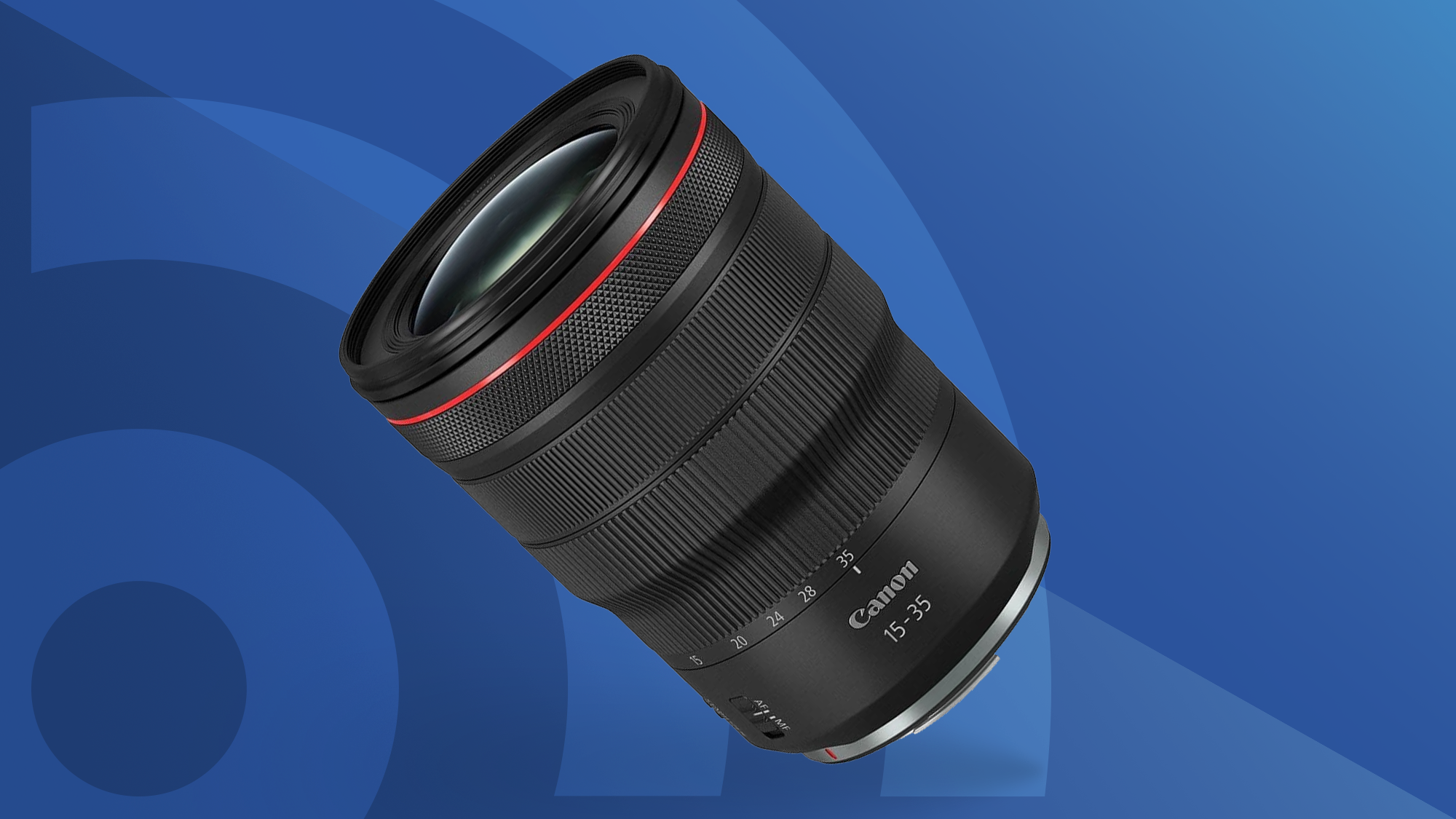
Canon’s RF lens line-up has grown significantly since it launched in 2018. The catalog now includes something to cover pretty much any shooting scenario, from portrait primes to wide-angle zooms. Which one you need depends on what and how you plan to shoot. That’s why we’ve tested all of the best Canon RF lenses and distilled the results in the guide below.
Of all the Canon RF lenses we’ve tried, the RF 24-240mm F4-6.3 IS USM is the closest thing to an all-rounder. It covers a versatile zoom range with good sharpness. We praised its image quality in our review, as well as its handling. Even paired with one of the best Canon cameras, though, there’s no single lens that can excel in every scenario. That’s why we’ve covered a whole range of lenses below.
Each recommendation in our round-up is based on extensive real-world feedback from our expert team. From 50mm prime lenses to pro telephoto glass, we’ve tested Canon RF lenses fit for every user and budget. To help you find the right one, our guide is divided based on who and what we think each optic is best suited for.
Top 3 picks
The round-up below will give you a quick overview of the best Canon RF mount lenses available right now. When you find one that fits your budget and requirements, you can use the links beneath each entry to jump down to our full summary.

The best all-rounder
Covering a range that’s really useful for travel, this superzoom handles well and delivers very good sharpness.
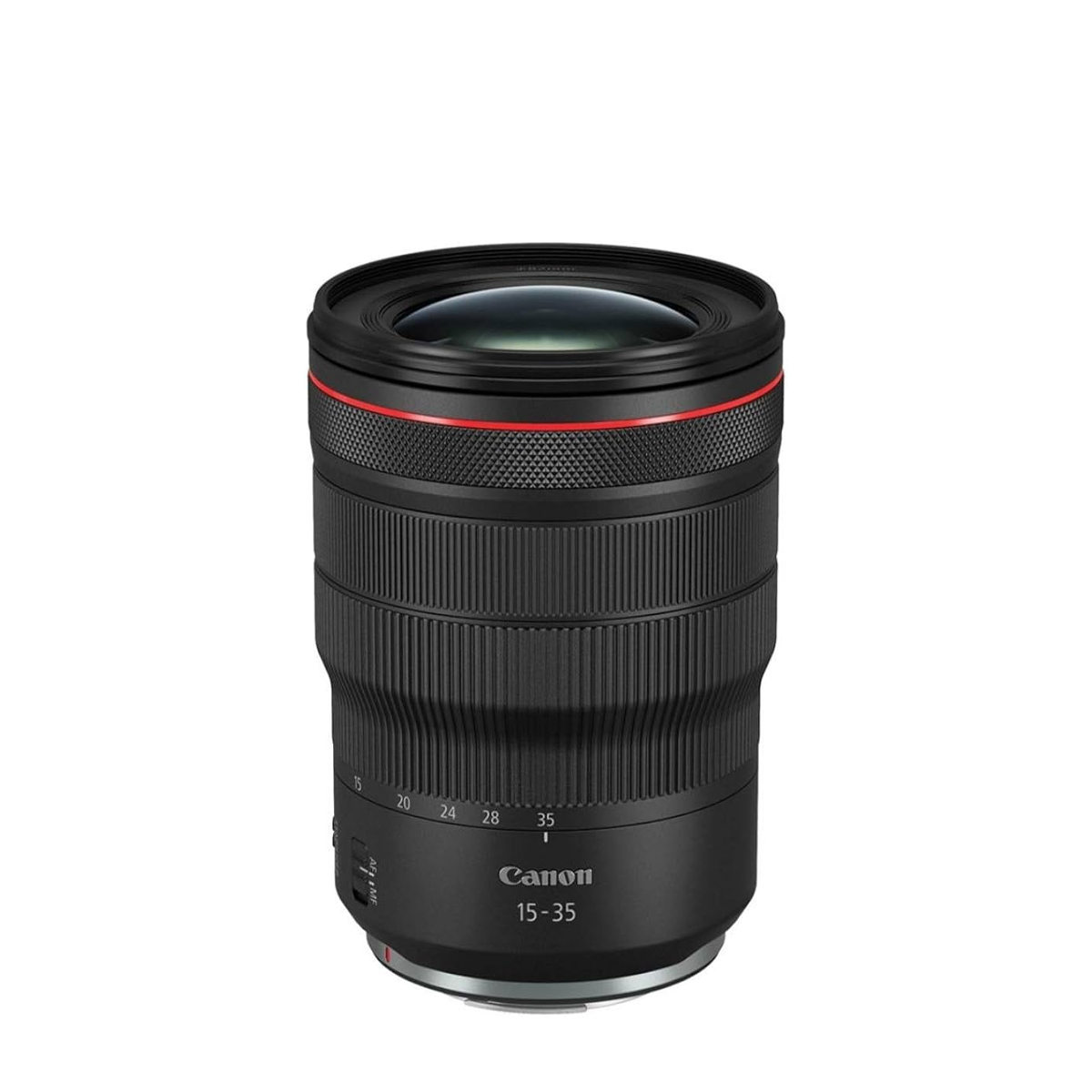
The best wide-angle zoom
This pro-grade wide-angle zoom bears all the hallmarks of Canon’s high-end lenses, including superb build quality.
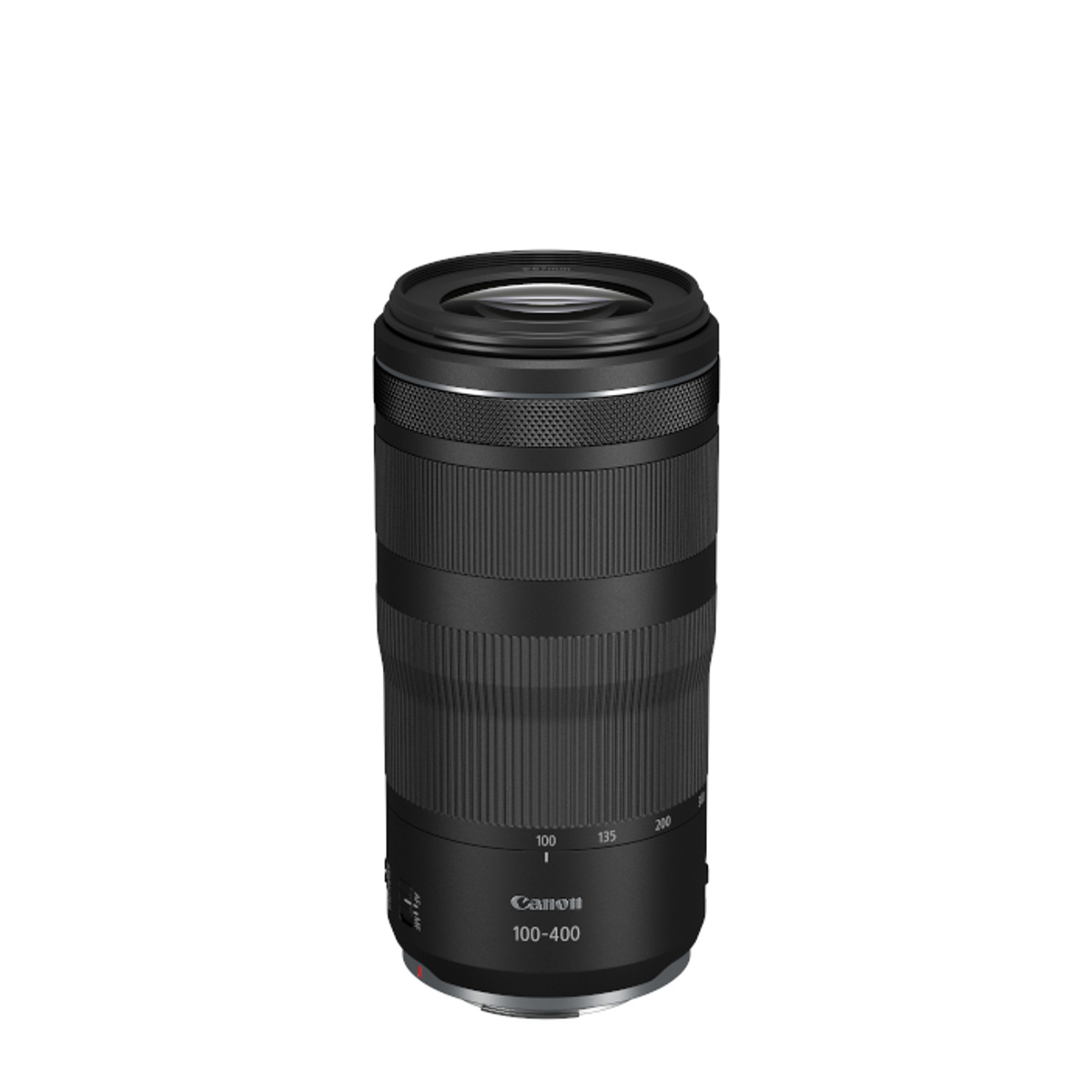
The best budget telephoto
Easy to handle, this full-frame telephoto lens has an accessible price tag, useful zoom range and shoots well in good lighting conditions.
Best by use-case
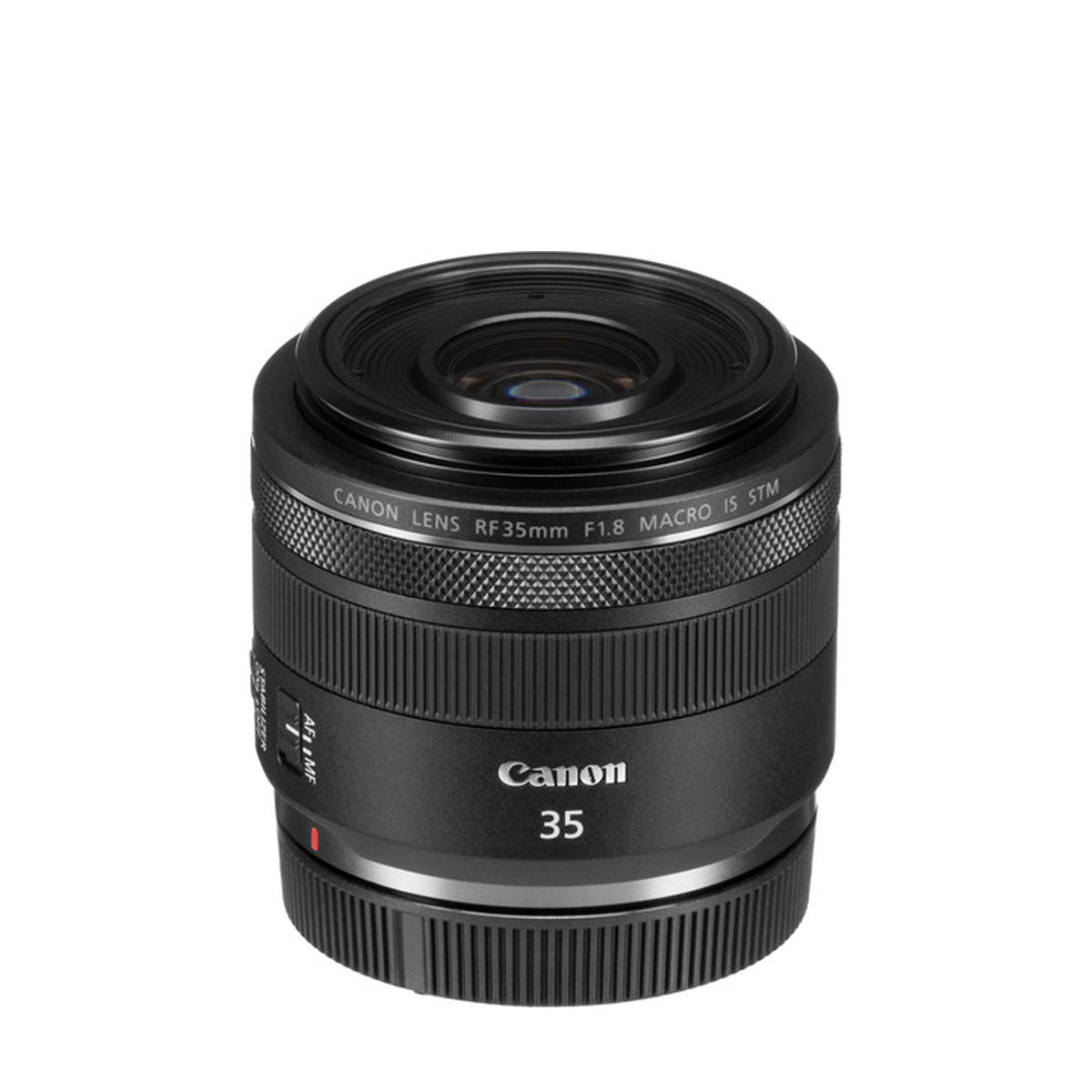
The best 35mm prime
A fast, compact prime with a natural focal length, this 35mm lens can also do extreme close-ups, making it a great value choice.
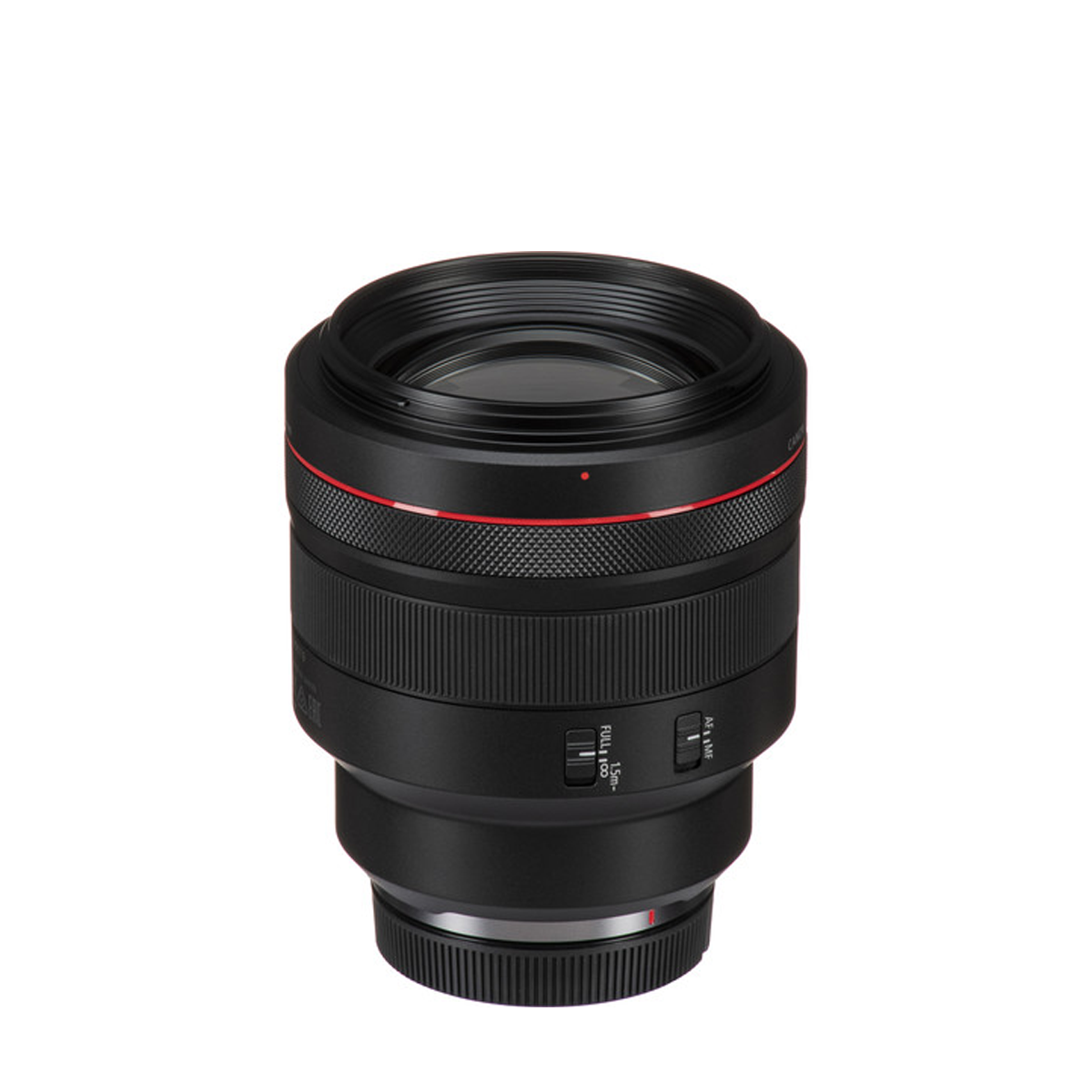
The best portrait lens
It’s very expensive, but if you demand a top-end portrait lens with ultra-tight depth of field, this f/1.2 delivers incredible results.

The best super-telephoto zoom
Its aperture and autofocus aren’t the fastest, but this zoom gives you fantastic reach while remaining relatively compact.
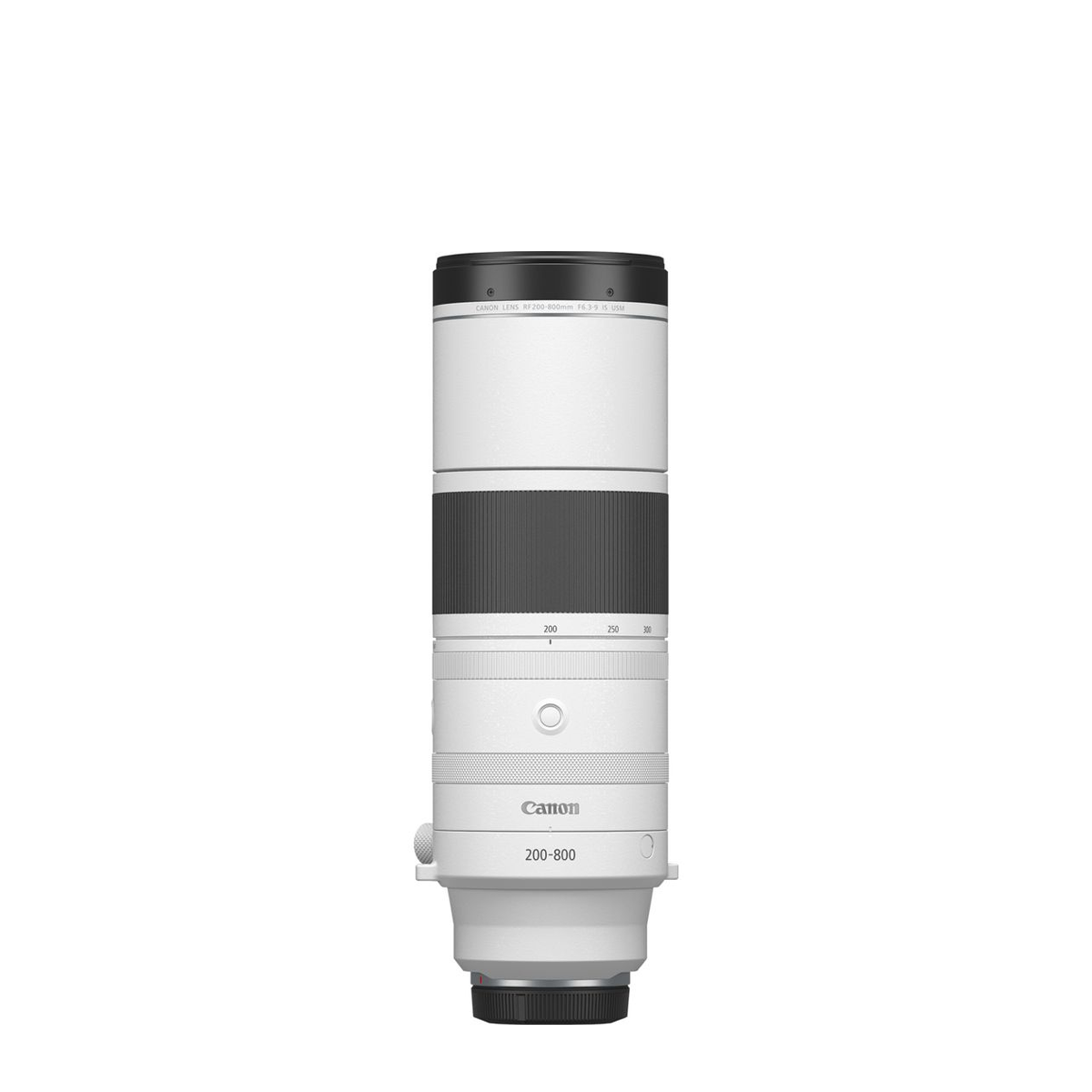
The best full-frame super-zoom
Zooming further than anything else, this balanced 200-800mm has the range to cover almost anything and deliver sharp detail.

The best macro lens
Canon’s only official RF macro lens offers 1.4x magnification for frame-filling close-ups, plus handy bokeh control for portraiture.
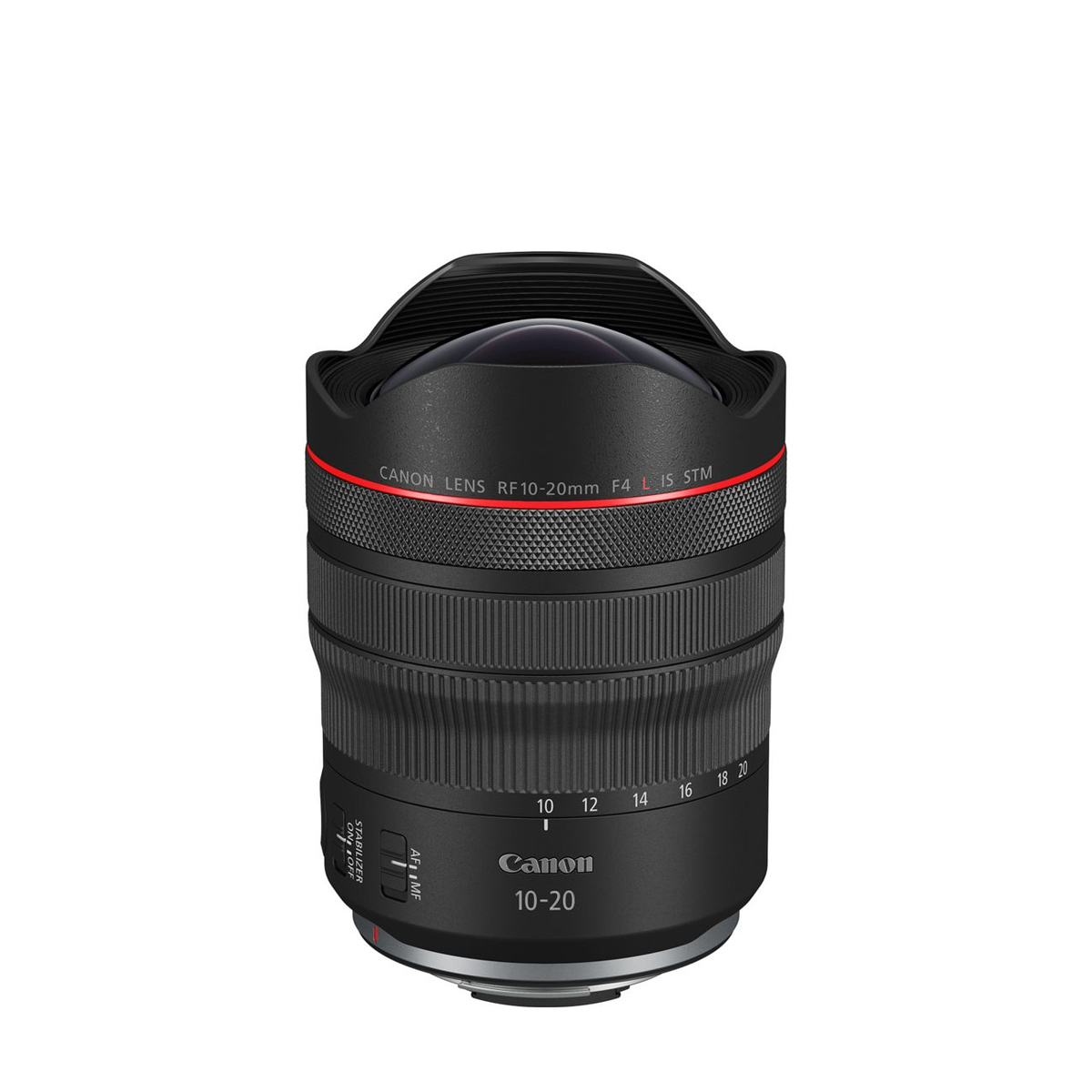
The best ultra-wide
It’s expensive and relatively niche, but the optical performance of this ultra-wide zoom make it an unrivalled choice for interiors.

Tim is TechRadar's Cameras Editor. With more than 15 years' experience in the photography industry, Tim has developed a deeply technical knowledge of what makes a good lens. He notes, "While kit lenses are a good starting point for beginners, the Canon RF lenses listed here will allow your photography to expand as your skills grow. In putting together this guide, we've tried to include RF mount lenses suited to every type of Canon photographer, as well as options for a wide range of budgets."
Best Canon RF lenses in 2025
Why you can trust TechRadar
Below you'll find full write-ups for each of the best Canon RF lenses in our list. We've tested each one extensively, so you can be sure that our recommendations can be trusted.
The best all-rounder Canon RF lens
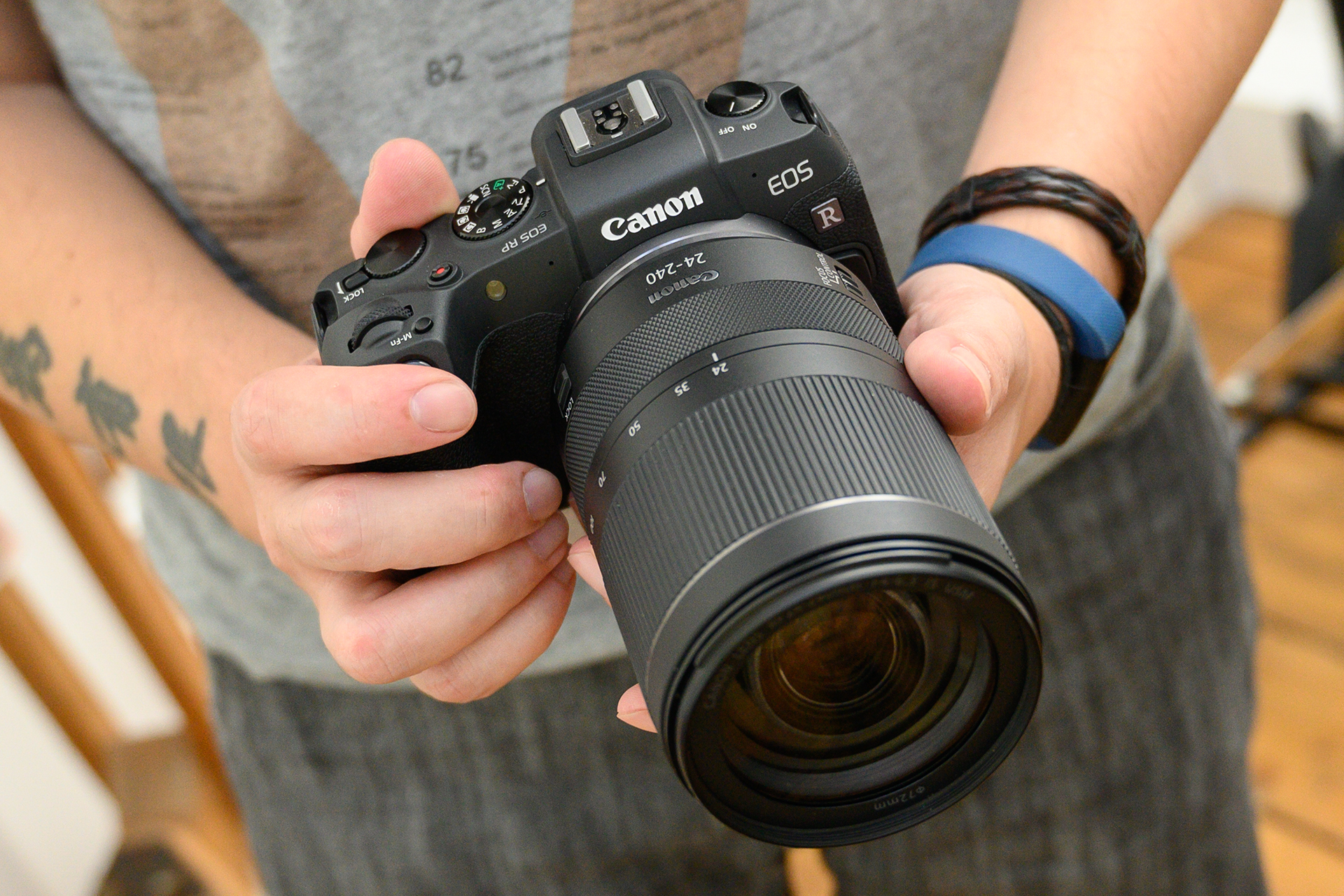
Specifications
Reasons to buy
Reasons to avoid
Superzoom lenses are notorious for bumping up the zoom range while compromising image quality, typically with a drop in sharpness and a rise in distortions. The upside is that you can cover everything from wide-angle to telephoto shooting at the twist of a zoom ring, rather than having to change the lens on your camera, or carry additional lenses in your camera bag. As such, this type of lens is great for travel and walkabout photography.
Rising well above the norm, we found that the RF 24-240mm delivers very good sharpness and, while distortions are very extreme, they’re automatically corrected in-camera, basically becoming a non-issue. Handling is natural and, as with some other RF lenses, a switch is featured that enables you to swap the action of the manual focus ring to other, customizable functions. There are no weather-seals and you need to buy the lens hood separately but, all in all, this is a lens that really puts the ‘super’ into superzoom.
- Read our in-depth Canon RF 24-240mm F4-6.3 IS USM review
The best wide-angle zoom
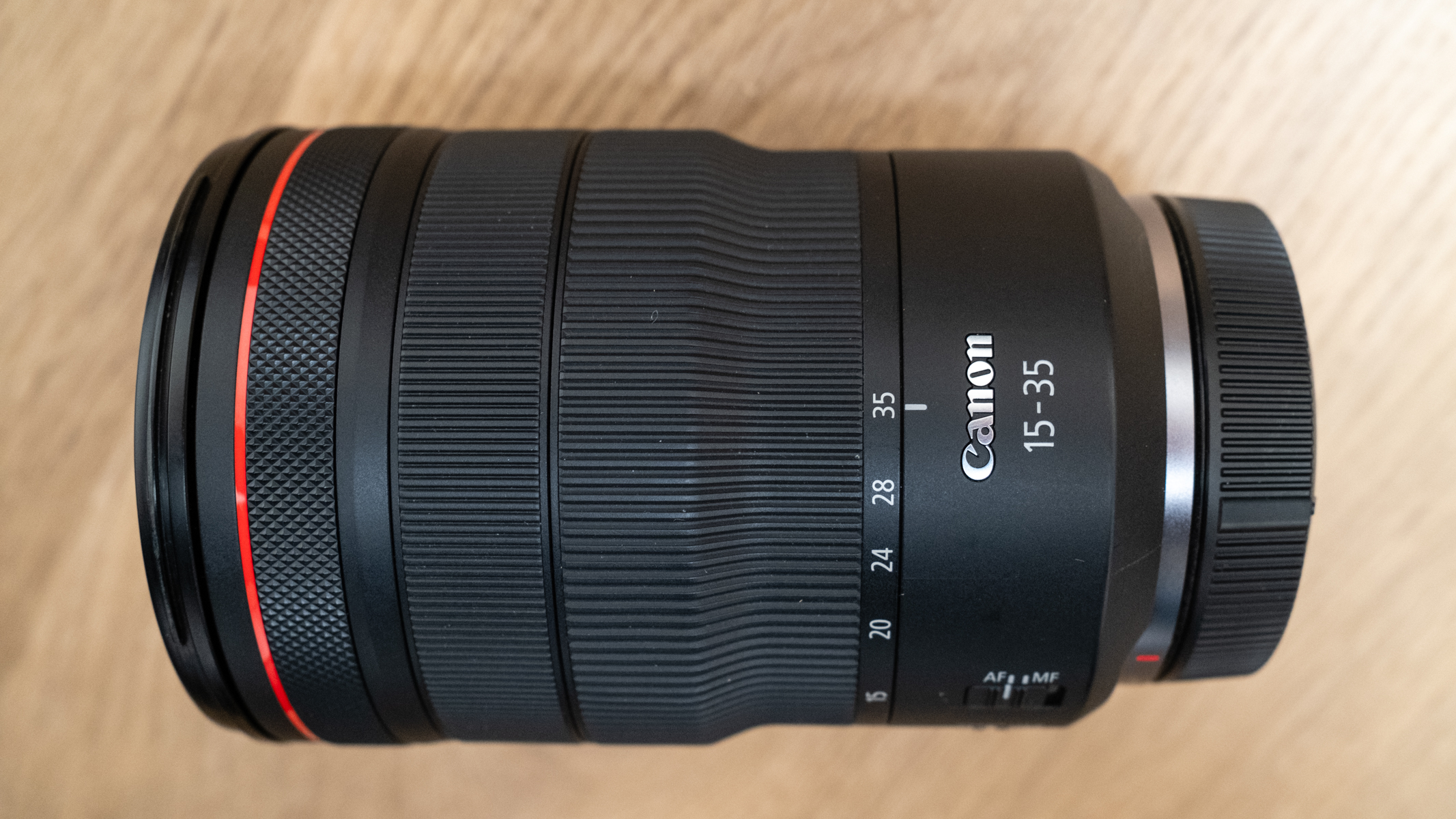

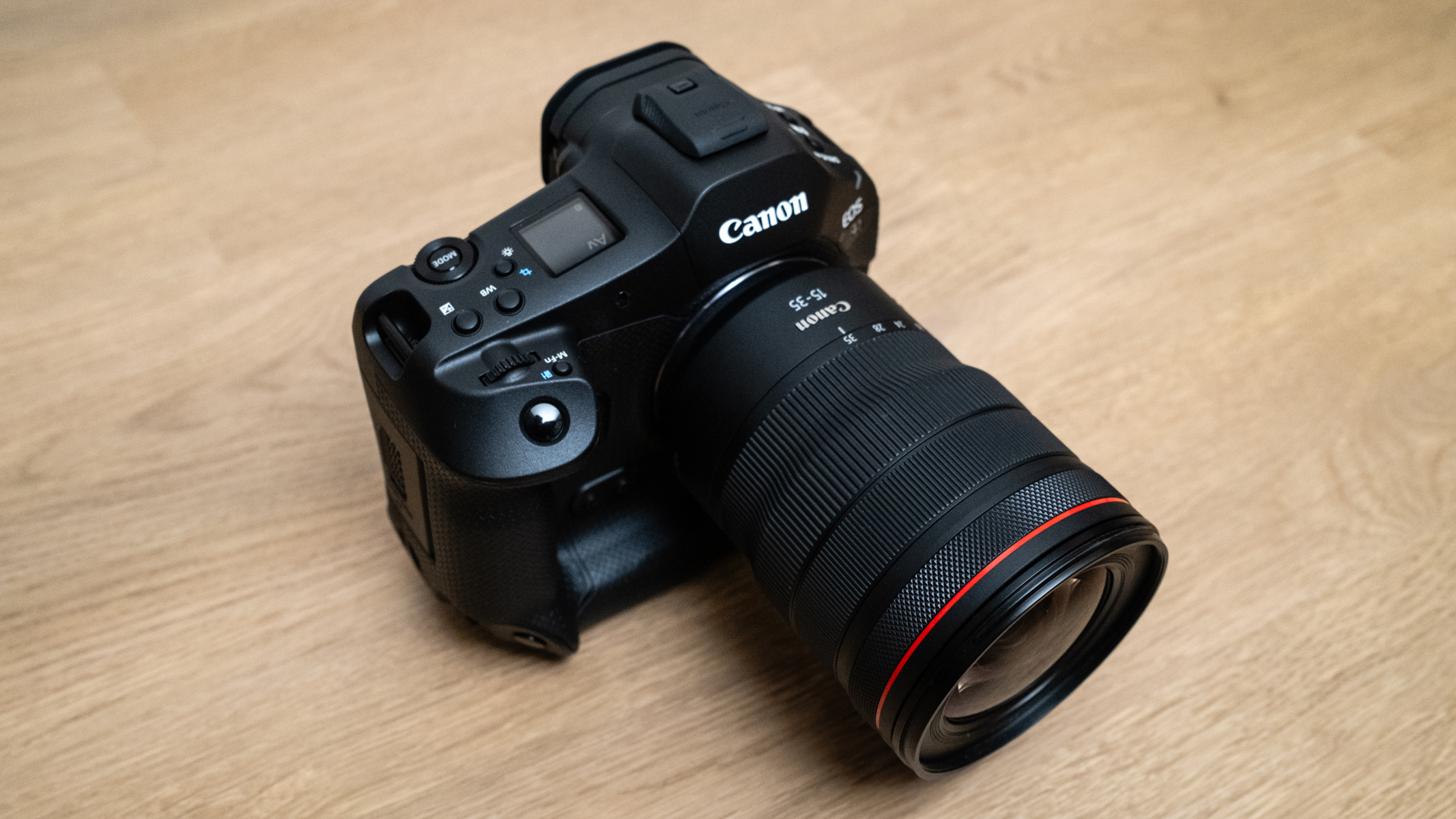
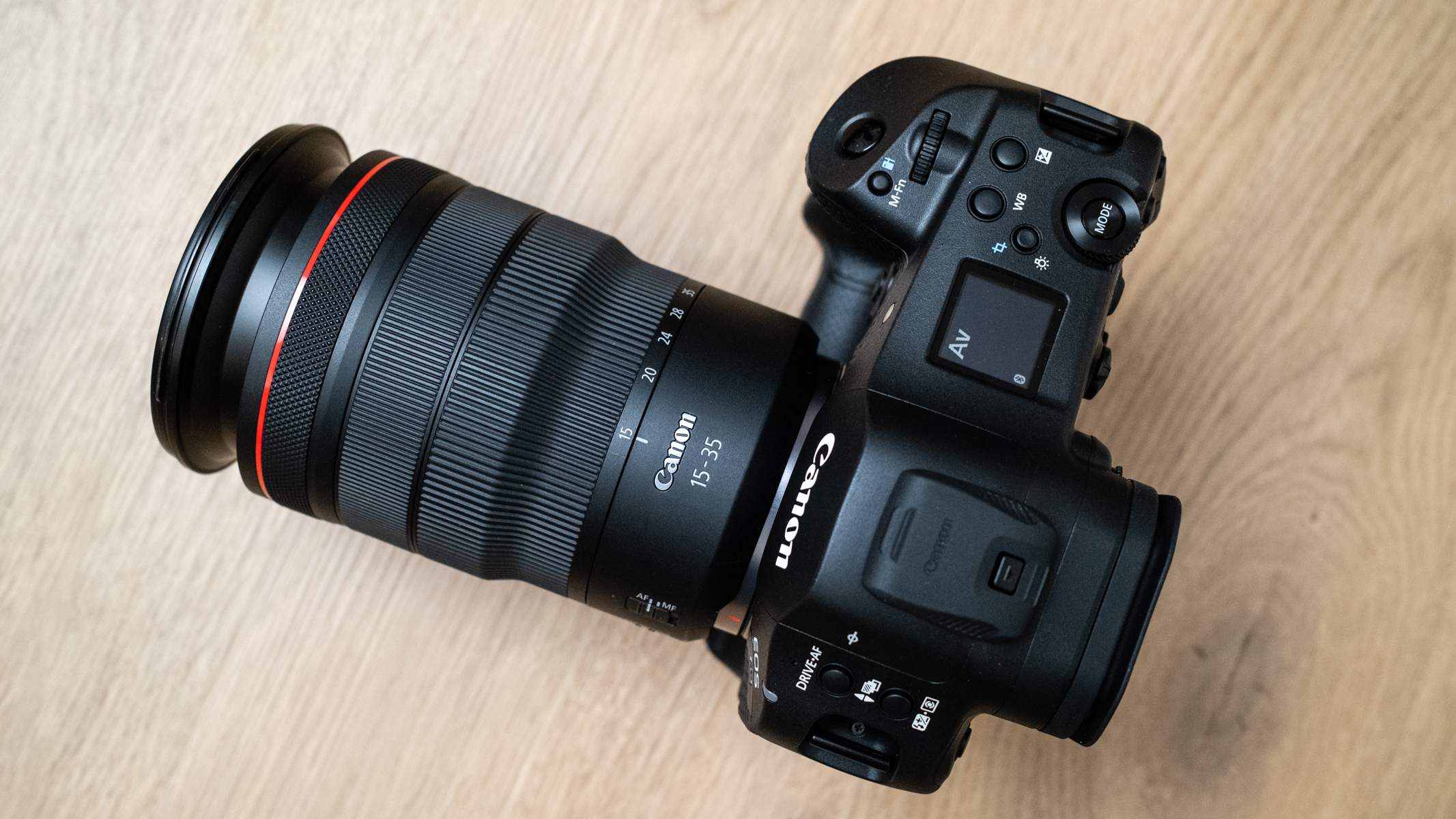

Specifications
Reasons to buy
Reasons to avoid
With a useful wide-angle zoom range and a solid set of features, we think the 15-35mm F2.8L IS USM is a quality choice for landscape, architecture and travel photographers. In our review, we praised its pro-grade build quality: it’s slightly heavier than expected, but it balances well with full-frame Canon bodies, plus it benefits from weather seals. Like other upmarket RF lenses, it features a programmable control ring. Whether that’s useful will come down to your personal shooting preference.
In testing, we found the Nano USM autofocus system rapid yet virtually silent, while the constant f/2.8 aperture opens up creative potential. Image quality also impressed in our review, with decent edge sharpness and minimal chromatic aberration. The caveat is that the 15-35mm relies heavily on lens corrections, which is surprising for L-Series glass at this price. Then again, you’re also getting useful features such as optical image stabilization and a short minimum focus distance. Taken together, you’ve got a versatile wide-angle lens for full-frame Canon mirrorless cameras.
- Read our in-depth Canon RF 15-35mm F2.8L IS USM review
The best budget telephoto lens for Canon cameras
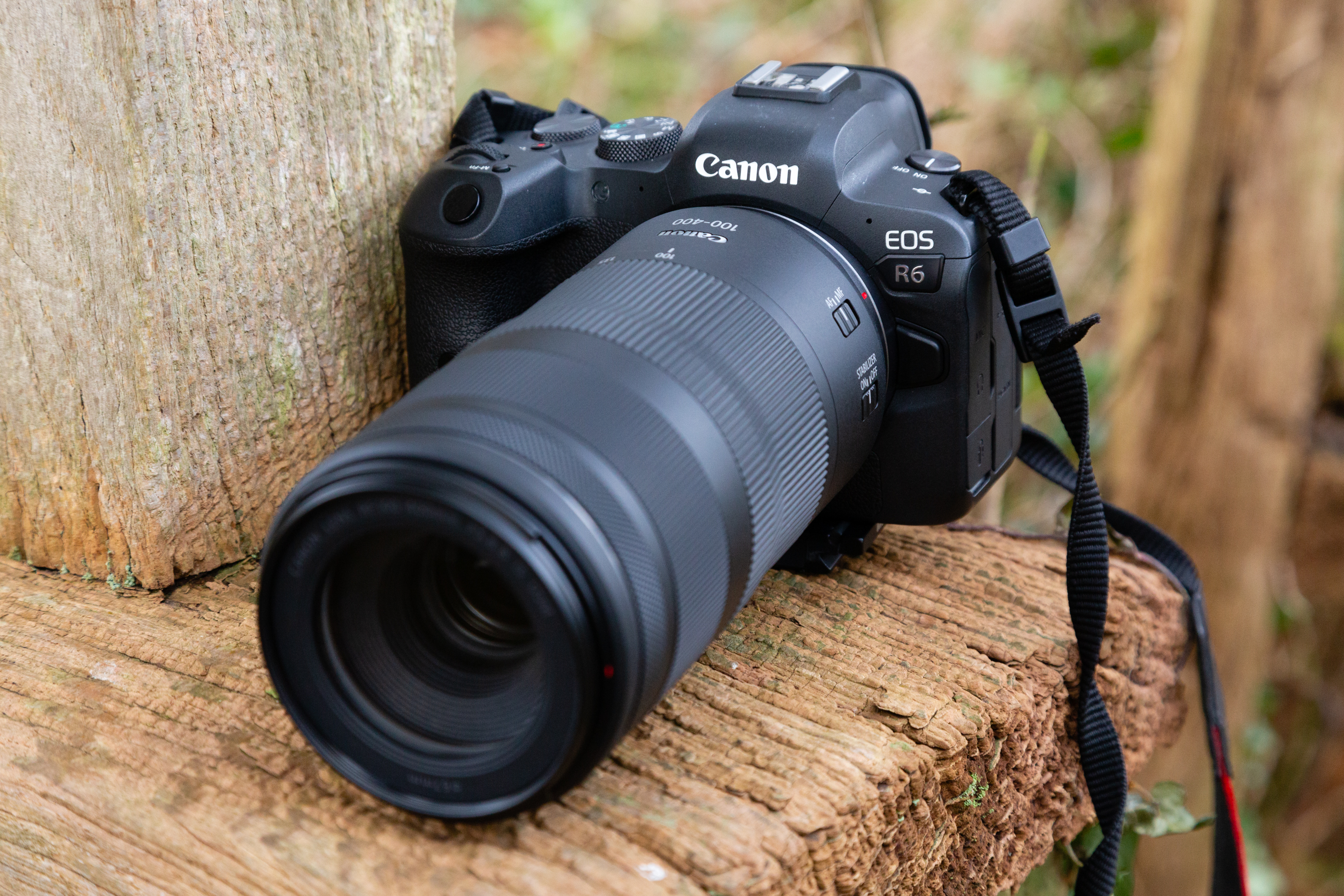
Specifications
Reasons to buy
Reasons to avoid
With a portable build and accessible controls, this is a fantastic full-frame telephoto lens for students of sport and wildlife photography. Lightweight at 635g and relatively compact at 165mm from end to end, we found it easy to wield in testing. Space around the lens is utilised well, with a broad zoom ring that comes in handy when you need to quickly target a subject. And despite its handy proportions, it offers an excellent amount of reach: 400mm offers useful flexibility.
A maximum aperture of f/5.6 isn’t the widest around, and means you’ll need to accept the noise of higher ISO settings if you want faster shutter speeds. That said, the lens performs well in good light, with no noticeable barrel distortion or chromatic aberration. While the built-in image stabilizer only has one mode, it still works impressively well. There are some limitations that come with the accessible price tag: there’s no focus limiter and you can only lock the focal length at 100mm. But this is nevertheless a fun telephoto that’s easy for beginners to shoot and travel with.
- Read our in-depth Canon RF 100-400mm F5.6-8 IS USM review
The best 35mm Canon RF prime lens
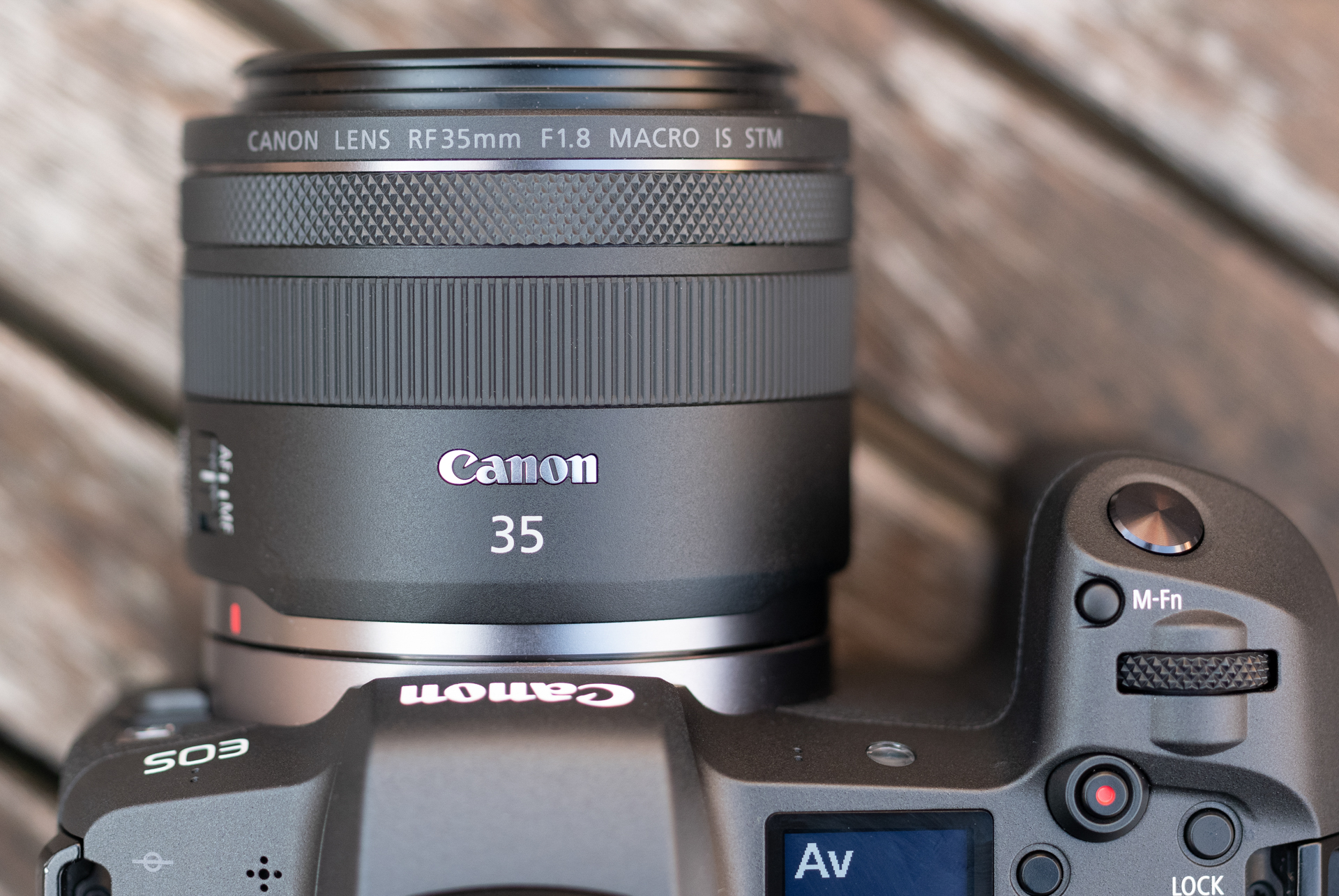
Specifications
Reasons to buy
Reasons to avoid
Thanks to its natural perspective, 35mm is a popular focal length that's ideal for street, architectural and landscape photography. This Canon number is particularly versatile, because it delivers 0.5x macro magnification at its shortest focus distance of 0.17m, so it can capture extreme close-ups. The only catch is that, as the distance is measured from the focal plane of the camera, and the lens’ inner barrel extends at shorter focus distances, the working distance between the front of the lens and the subject shrinks to just 6cm for 0.5x macro shooting.
Typical of non-L-series Canon lenses, there are no weather-seals and the hood is sold as an optional extra. Even so, build quality felt very good in testing, and there’s a separate customizable control ring, as well as onboard switches for AF/MF and on/off for the 5-stop image stabilizer. As a fast yet compact and lightweight prime lens with great performance, we think it offers great value at the price. If you’re on an even tighter budget or want a more seriously ultra-wide-angle lens, try the fully manual Samyang MF 14mm F2.8 RF.
- Read our in-depth Canon RF 35mm f/1.8 IS Macro STM review
The best Canon RF mount portrait lens

Specifications
Reasons to buy
Reasons to avoid
For most people, the moderately priced and easily manageable Canon RF 85mm f/2 Macro IS STM is an ideal lens for portraiture on any of Canon’s full-frame mirrorless EOS R series cameras. For those who demand an even tighter depth of field and faster low-light shooting, the f/1.2L lens is simply the best. Building on the legendary reputation of Canon’s EF 85mm f/1.2 lens for DSLRs, the RF mount edition is completely redesigned. It delivers superior sharpness which remains spectacular even when shooting wide-open, along with deliciously smooth bokeh.
In testing, we found autofocus much faster than in the older EF lens, while the high-tech optical path includes Air-Sphere Coating for minimizing ghosting and flare, and Blue Spectrum Refractive Optics that reduce color fringing to negligible levels. The L-series build includes weather-seals and, as with other high-end RF lenses, there’s a dedicated customizable control ring. If you want something cheaper with faster aperture and you don’t mind focusing manually, try the Samyang MF 85mm f/1.4 RF.
- Read our in-depth Canon RF 85mm f/1.2L USM review
The best super telephoto for Canon cameras
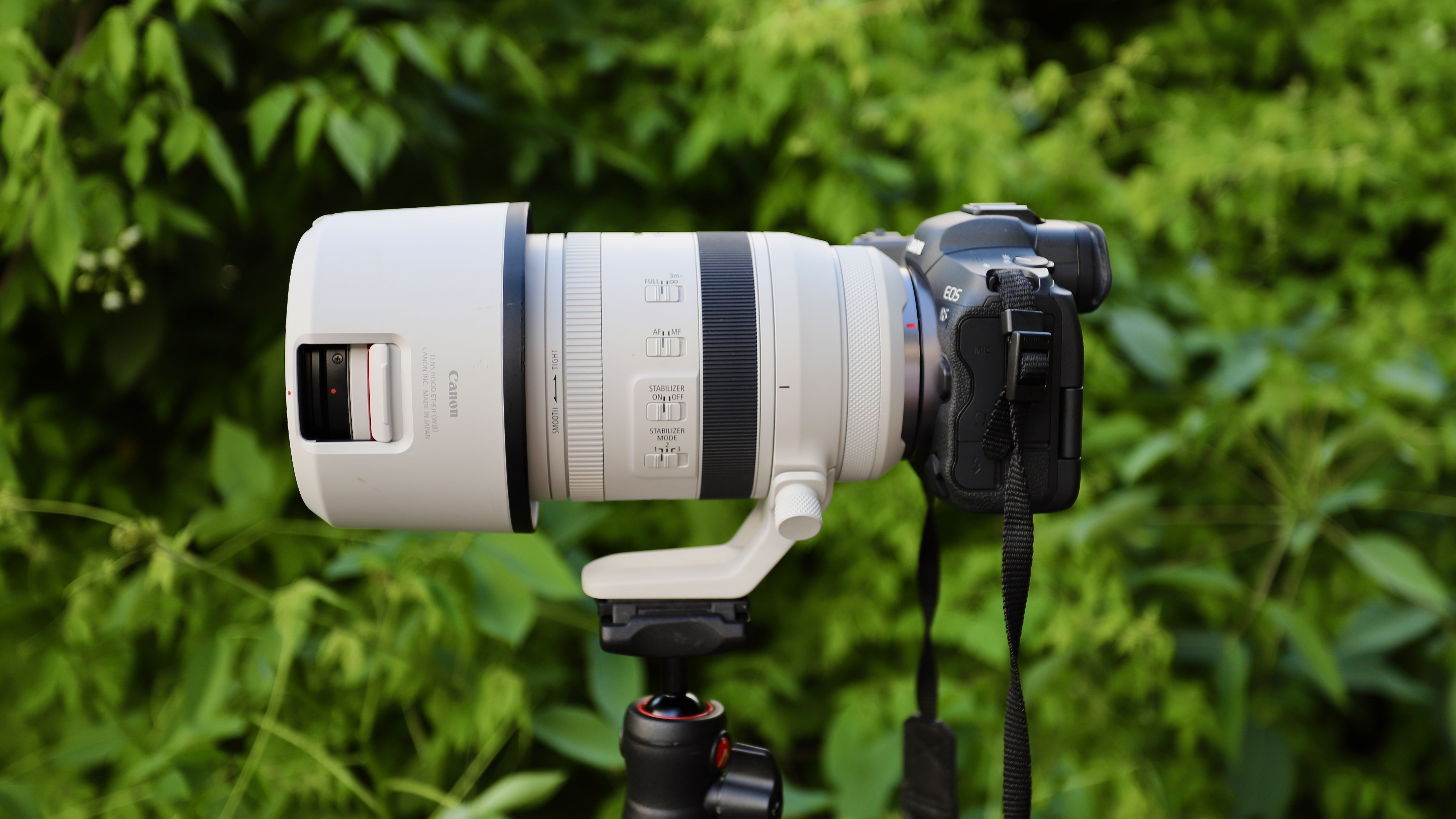
Specifications
Reasons to buy
Reasons to avoid
Picking up the baton from Canon’s highly popular EF 100-400mm zoom for DSLRs, this lens for mirrorless EOS R-series cameras delivers even greater telephoto reach, but remains reasonably compact and lightweight for a ‘super-telephoto’. The trade-off is that the aperture shrinks to f/7.1 at the long end of the zoom range, so you might need to bump up your camera’s ISO setting if you need to freeze action under dull lighting conditions, which can degrade image quality.
Like the RF 70-200mm f/2.8, this lens features a triple-mode, 5-stop image stabilizer and a fast Dual Nano USM autofocus system. However, we found that autofocus speeds were a little pedestrian on EOS R and RP bodies. The lens really comes into its own on EOS R5 and R6 bodies, where it takes full advantage of the advanced, intelligent autofocus tracking for people, animals and birds. It’s able to track these as they move around the frame with excellent accuracy and consistency.
- Read our in-depth Canon RF 100-500mm f/4.5-7.1L IS USM review
The best super zoom for full-frame Canon cameras

Specifications
Reasons to buy
Reasons to avoid
You won’t find another lens with reach like this: it’s the world’s first full-frame zoom to hit 800mm. Paired with a camera body like the Canon EOS R7, with its subject-detection autofocus and in-body image stabilization, you have a combo that can cover just about anything – from Sunday sport to faraway wildlife. The only major drawback is its modest maximum aperture which, at f/6.3-9, means its action credentials are limited to good lighting.
Still, our tests found this a compelling lens to shoot with. A little clarity is lost at 800mm, but image quality is otherwise impressive, and very sharp at 200mm. 5.5-stops of optical image stabilization also help to keep results crisp. The lens itself is nicely built and well-balanced when paired with Canon’s DSLR-style mirrorless models, such as the EOS R5. Its performance isn’t quite up there with Canon’s pro-grade glass, but this is still a winning choice for enthusiasts.
- Read our in-depth Canon RF 200-800mm F6.3-9 IS USM review
The best Canon RF mount macro lens
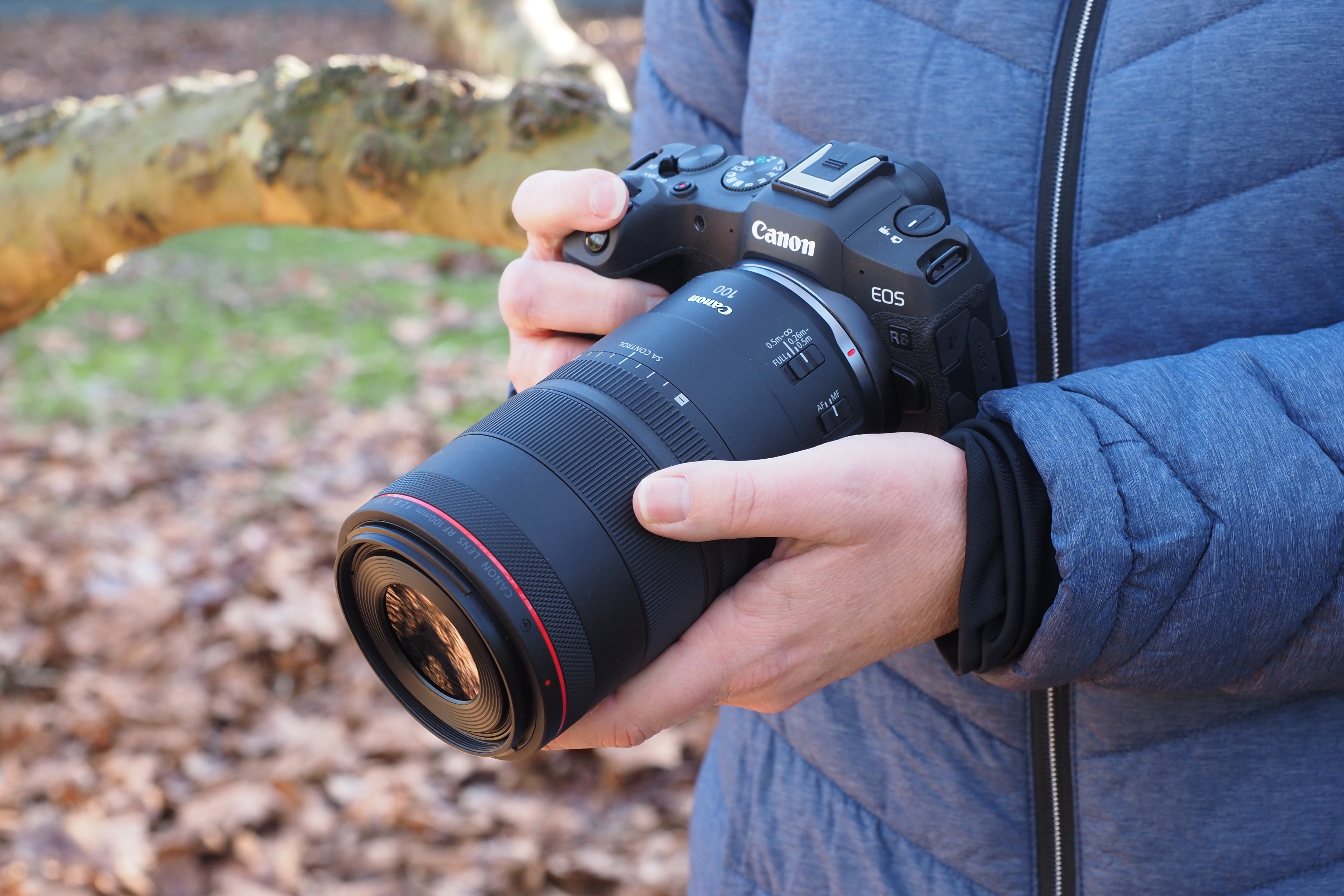
Specifications
Reasons to buy
Reasons to avoid
The only official macro lens for Canon’s RF mount, this close-up specialist is capable of producing extremely sharp images at short distances. Magnification of up to 1.4x means you can fill the frame with small subjects, even if the length of the lens itself has the potential to cast unwanted shadows. Built-in image stabilization is also a welcome addition, though we found it less effective when focusing up close.
Interestingly, Canon has also touted this as a portrait lens: a Spherical Aberration control ring, unlocked with a switch underneath, can be used to adjust bokeh and soft-focus, giving it a useful backup skill. Keen portrait photographers will find better value in a dedicated lens like Canon’s RF 85mm f/2 Macro IS STM, but if you want a versatile macro lens with the familiar look and feel of Canon RF glass, this has a lot going for it.
- Read our in-depth Canon RF 100mm F2.8L Macro IS USM review
The best ultra-wide Canon RF lens
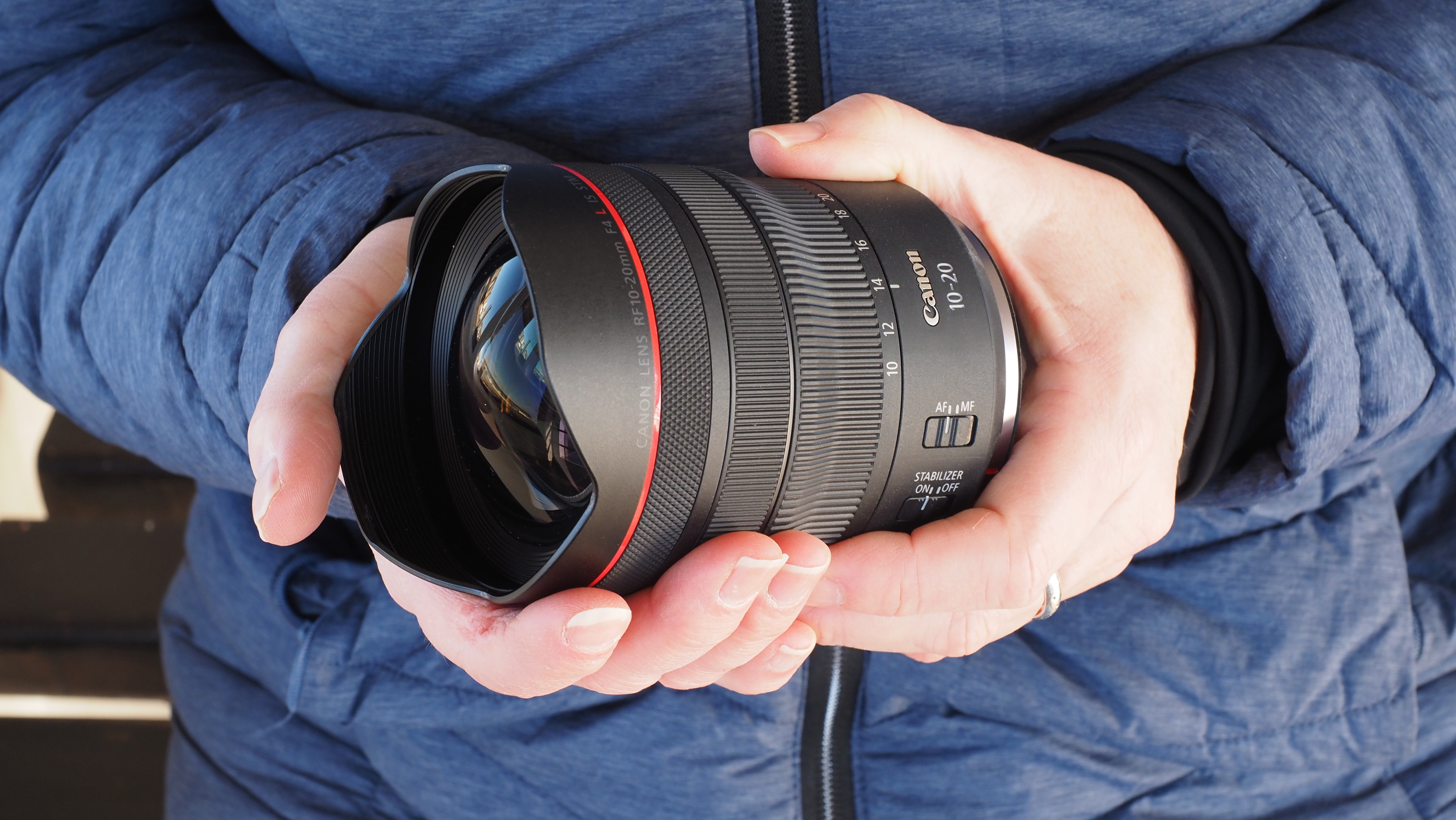
Specifications
Reasons to buy
Reasons to avoid
Not many Canon photographers need a lens that can shoot at 10mm, a focal length so wide that it can be dizzying. In fact, we found in our review that it requires care to manage the convergence effect of the ultra-wide focal length. But if you photograph architecture and interiors, and you have the budget, this is an exceptional tool. Nothing in the RF line-up comes close to matching its full-frame field of view.
It benefits from exceptional optical performance, even if it relies heavily on digital corrections to adjust for distortion. Edge-to-edge sharpness proved pretty exceptional, dropping away only a little at corners. In testing, we also found it a lovely lens to handle, with a lightweight build and useful physical controls. Built-in image stabilization controls wobble at the edge of the frame, too. There are better value RF lenses if you don’t need to go so wide (such as the Canon RF 14-35mm f/4 L IS USM) – but within its niche, this is an outstanding lens.
- Read our in-depth Canon RF 10-20mm F4L IS STM review
Also consider
We've reviewed a whole range of Canon RF lenses, which means there are plenty more that almost made it into this list. Here are a few honorable mentions to consider.
Best standard zoom – Canon RF 24-70mm F2.8L IS USM: Covering a standard range with a fast, constant f/2.8 aperture, this 24-70mm number is a fantastic zoom lens for covering a variety of scenarios. Based on our in-depth tests, it delivers superb image quality and all-round performance, aided by super-fast Nano USM autofocus and 5 stops of image stabilization, with the added benefit of weather seals.
Best pro telephoto – Canon RF 70-200mm F2.8L IS USM: Offering a constant f/2.8 aperture, this well-built lens is a fantastic choice for action and wildlife photographers. Rather than a fixed physical length, it adopts a telescoping design that gives it a comparatively compact and lightweight construction. Yet it also benefits from rock-solid build quality and features a full set of weather-seals. In testing, we found image quality excellent in all respects.
Best standard prime – Canon RF 50mm F1.8 STM: A compact and inexpensive ‘nifty fifty’, this prime lens feels right at home on smaller Canon mirrorless cameras like the EOS RP. It’s super-small at just 41mm long and lightweight, too, at a mere 160g. In testing, we found it tidily designed and impeccably finished. It also shoots fast at f/1.8 and our review found that it delivers excellent sharpness and pleasantly smooth bokeh.
How to choose the best Canon RF lens
Choosing the right lens for you camera is a complicated thought process. There are several factors to consider before making your decision, beginning with price. Affordability matters but if you did have the budget for good glass, then here are the the other considerations to keep in mind.
Purpose: To start with, think about what you want to use the lens for. If you're after all all-purpose, general-use lens, then a standard zoom lens like a 24-70mm might fit the bill perfectly, giving you various focal lengths as well as variable aperture. Standard zooms suits a variety of purposes, but if you shoot more macros, then a dedicated macro lens might be the best option. Or a wide-angle if you want to shoot a lot of landscapes, or primes for portraits.
Sensor format and lens mount: It's important to know what sensor your camera sports before you pick your first lens. Lenses are built specifically for 35mm (full-frame), APS-C, micro fourth thirds, and medium format bodies, although some can be used across some sensor sizes via an adapter. It also means you'll need to pick lenses that are compatible with your camera's lens mount, although you can use lens adapters while switching from a DSLR to a mirrorless body within the same brand (eg: Canon's EF lenses can be used on RF mounts).

Aperture: This is an important consideration as it controls how much light can enter a lens – the larger the aperture, the more light is going to hit the sensor, and vice versa. The f stop number in the name of the lens gives you the aperture, and the smaller the f stop number, bigger the aperture. For example, the RF 35mm f/1.8 Macro IS STM has a large aperture, meaning its low-light performance will be better than a lens with aperture of, say, f/5.6. The aperture also influences depth of field, aka that blurry background you see in some images. Large apertures like f/1.8 produce tighter depth of field, and thus very soft, blurry backgrounds and bokehs.
Image stabilization: Having a stabilized lens can be handy for handheld shoots, particularly when combined with a camera's in-body image stabilization (IBIS). This will increase the number of sharp images you capture by automatically correcting for hand and camera shake... to certain degree. Stabilized lenses from Canon are marked with 'IS' in the name.
Meet the team
Our expert team has a wealth of experience when it comes to testing the best camera gear. Each of our reviewers has shot with kit from a range of manufacturers, including the best Canon lenses across the last couple of decades. They each know what makes a great Canon R lens.

Tim is TechRadar's Cameras Editor and has been cutting his teeth in the photo and video industry for almost 20 years. He looks after all of TechRadar's cameras content, covering buying guides, features, reviews and news.

Rod is an independent photographer and photography journalist with more than 30 years' experience. He's previously worked as Head of Testing for Future’s photography magazines, including Digital Camera, N-Photo, PhotoPlus, Professional Photography, Photography Week and Practical Photoshop, and as Reviews Editor on Digital Camera World.
Matt has written and reviewed cameras for just about every leading photo publication, including Digital Camera World (where he was Editor), What Digital Camera, WEX and of course TechRadar.

Mark is TechRadar's Senior news editor and has been a technology journalist since 2004. Formerly Trusted Reviews and TechRadar's cameras editor, Mark has tested cameras over many years from all of the leading brands.

James Abbott is a professional photographer and freelance photography journalist. He contributes articles about photography, cameras and drones to a wide range of magazines and websites where he applies a wealth of experience to testing the latest photographic tech.

Paul is a digital expert. In the 20 years since he graduated with a first-class honours degree in Computer Science, Paul has been actively involved in a variety of different tech and creative industries that make him the go-to guy for reviews, opinion pieces, and featured articles.
How we test Canon lenses
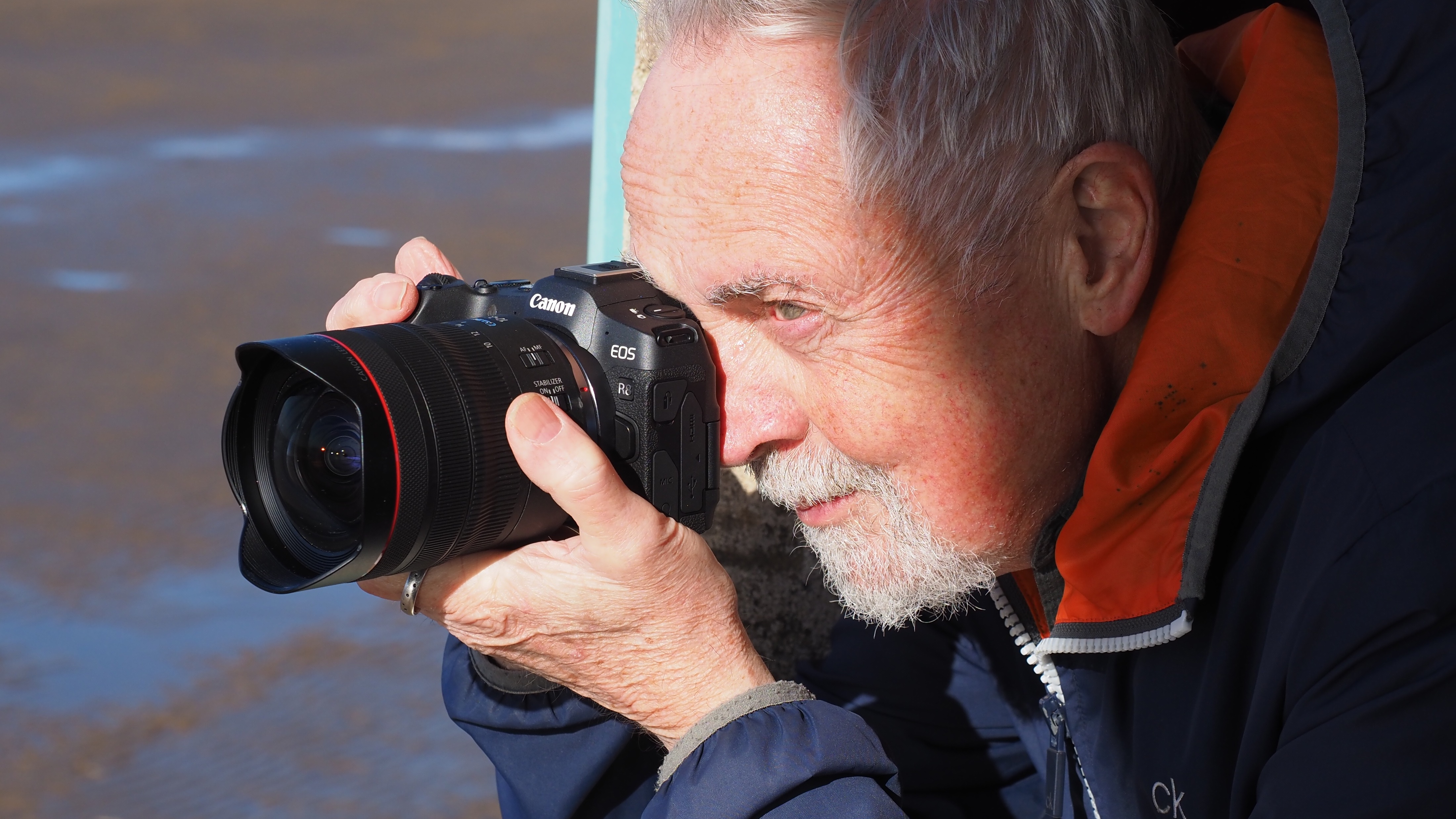
☑️ 100s of cameras reviewed
☑️ 15 years of product testing
☑️ Over 16,000 products reviewed in total
☑️ Nearly 200,000 hours testing tech
When evaluating the best Canon RF mount lenses, we follow a comprehensive testing process. Our team of expert reviewers devotes considerable hands-on time to each lens, to gain an in-depth understanding of its merits and limitations in different scenarios. We use each lens with one of the best Canon cameras and, where possible, try to pair it with both an APS-C and full-frame model from Canon’s EOS R system.
Most Canon photographers don’t use their lenses in controlled environments, so we don’t either. Instead, we test RF glass in the kind of real-world scenarios you’re likely to encounter. Depending on the lens in question, that might mean capturing candid portraits in the street, shooting travel scenes from the hip, or framing landscapes on a tripod. This approach gives us a good impression of the practical abilities of a lens, including features such as image stabilization, and how well its performance stacks up for different types of photography.
Throughout our testing process, we keep a number of elements in mind. One is autofocus, especially when looking at lenses designed with fast action in mind. We test the speed and reliability of focus performance in a range of lighting conditions. We also factor in any noise from its motor.
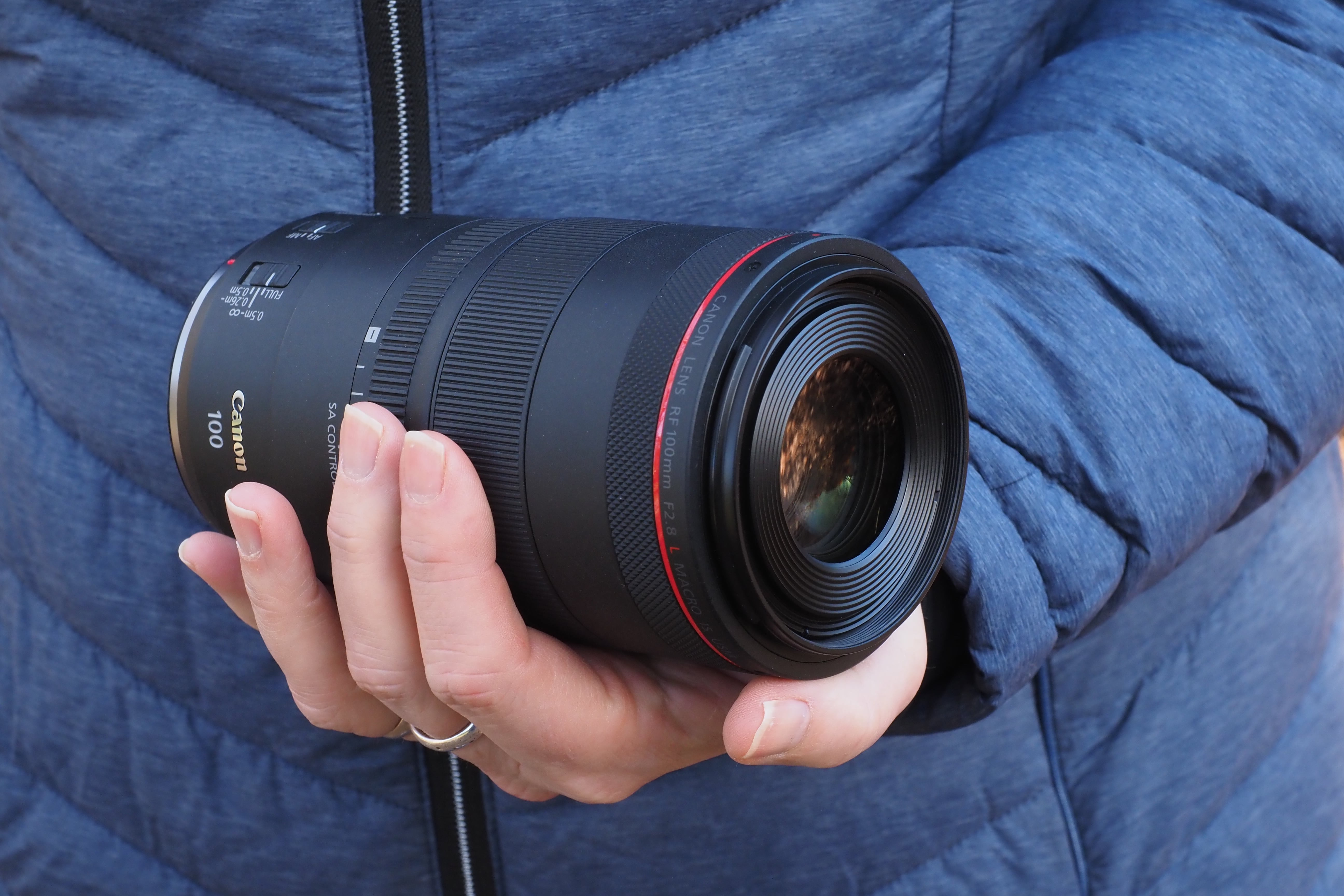
Handling is another important component. During our reviews, we assess how each lens feels in the hand when out in the field, including physical controls such as focus rings and function buttons. Similarly, we keep build quality in mind, especially for the kind of lenses that are likely to encounter heavy use.
When it comes to reviewing the stills shot on test, there are a few specific criteria on which we rate every Canon RF lens. First, we assess overall image quality, including contrast and sharpness across the frame. We’ll also look for smooth bokeh in areas with soft focus, particularly on lenses with wide maximum apertures. We also stay alert for optical imperfections, including distortion and chromatic aberrations (even though most Canon mirrorless cameras can digitally correct for these).
Based on all of the above, we’ll form a rounded view of a lens, the type of photographer it makes most sense for, and whether it’s one of the best Canon RF lenses.. We’ll think about its merits and drawbacks versus those of similar lenses from the Canon stable, as well as alternatives that might cost more.
Get daily insight, inspiration and deals in your inbox
Sign up for breaking news, reviews, opinion, top tech deals, and more.

Tim is the Cameras editor at TechRadar. He has enjoyed more than 15 years in the photo video industry with most of those in the world of tech journalism. During his time as Deputy Technical Editor with Amateur Photographer, as a freelancer and consequently editor at Tech Radar, Tim has developed a deeply technical knowledge and practical experience with cameras, educating others through news, reviews and features. He’s also worked in video production for Studio 44 with clients including Canon, and volunteers his spare time to consult a non-profit, diverse stories team based in Nairobi. Tim is curious, a keen creative, avid footballer and runner, and moderate flat white drinker who has lived in Kenya and believes we have much to enjoy and learn from each other.
- Matthew Richards
- Chris Rowlands
- Sharmishta SarkarManaging Editor (APAC)